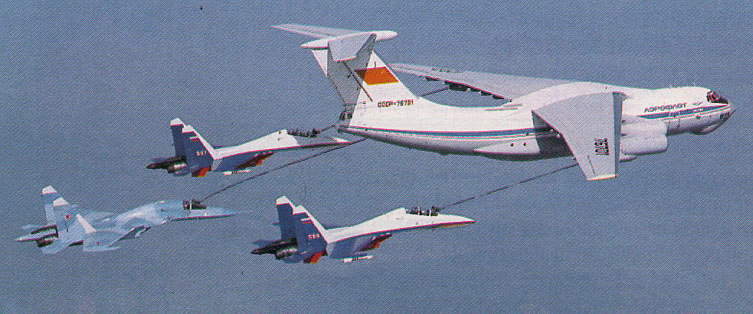My bad. I will rephrase my original thoughts. The original intent for the J-20 was to have less dependency on air refueling than Western fighters primarily because the PLAAF is not as capable as the US in terms of mastery of the skills involved.
Air refueling is not easy like everyone thinks it is.
The PLAAF's air refueling fleet is drogue equipped. This method has serious limitations in terms of refueling rates which affects how many aircrafts, even though they maybe small fighters, per event. Drogue delivers a lower rate of fuel flow than probe. Even though the receiver aircraft is a small fighter, it still consumes its own fuel while it is taking on fuel.
The US uses two methods: probe and drogue.
The probe method delivers a higher rate of fuel flow which is necessary for large receivers like the bombers and cargo jets.
The US Navy is an expeditionary force that must be as self reliant as possible uses the drogue method. Its lower fuel flow rate is adequate for its fleet of small aircrafts which came from aircraft carriers.
Using the US as example. The probe method can transfer up to 6,000 lbs/min. The drogue method is up to 2,000 lbs/min.
The J-20's size is no accident. The PLAAF realized its shortcomings in the air refueling area, but the need to have a 5th gen platform outweighs the need to have a comprehensive air refueling capability.
Note...
http://www.ausairpower.net/APA-PLA-Tanker-Programs.html
That is not two fighters at a time. But simply -- two fighters. Based upon its MTOW, as a modified platform, the air refueler Badger can carry only enough fuel to service only two fighters.
Remember, the client is burning fuel at the same time he is taking on fuel. If fuel flow rate in equals to fuel flow rate consume, you will
NOT be refueling him. Your delivery must be higher than his consumption. If it is not high enough, the refueling time will take longer, but at the same time, you cannot cram fuel down his receptacle.
Assuming the J-20 is in full service. What this mean is that for every J-20 sortie, and we are looking at a typical four-ship sortie, if there is a need to air refuel this sortie, the PLAAF will have to assign its largest air refueler in inventory for that day.
Most people do not know it, but if you cannot provide that air refueling, that strike mission will be cancelled. That happened many times in Desert Storm when planners conflicted each other in terms of scheduling air refuelers.
At the current time, the US have 50 KC-10s, the largest of the air refuelers, and for the smaller KC-135s...
http://www.af.mil/AboutUs/FactSheets/Display/tabid/224/Article/104524/kc-135-stratotanker.aspx
How many air refueler modified IL-78s does the PLAAF have in order to support a typical four-ship sortie to patrol the SCS, for example ?


















